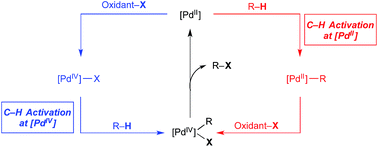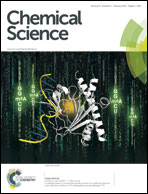Carbon–hydrogen (C–H) bond activation at PdIV: a Frontier in C–H functionalization catalysis
Abstract
The direct functionalization of carbon–hydrogen (C–H) bonds has emerged as a versatile strategy for the synthesis and derivatization of organic molecules. Among the methods for C–H bond activation, catalytic processes that utilize a PdII/PdIV redox cycle are increasingly common. The C–H activation step in most of these catalytic cycles is thought to occur at a PdII centre. However, a number of recent reports have suggested the feasibility of C–H cleavage occurring at PdIV complexes. Importantly, these latter processes often result in complementary reactivity and selectivity relative to analogous transformations at PdII. This mini review highlights proposed examples of C–H activation at PdIV centres. Applications of this transformation in catalysis as well as mechanistic details obtained from stoichiometric model studies are discussed. Furthermore, challenges and future perspectives for the field are reviewed.


 Please wait while we load your content...
Please wait while we load your content...